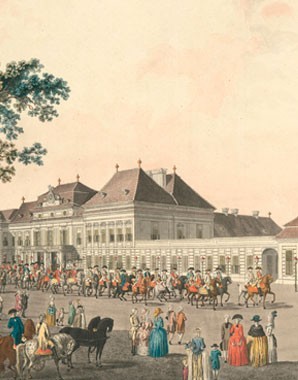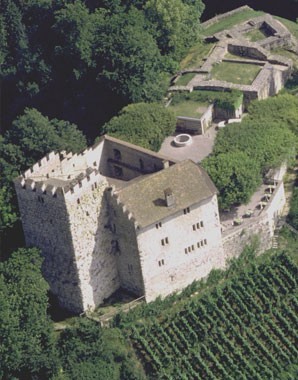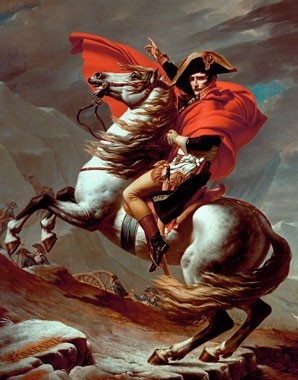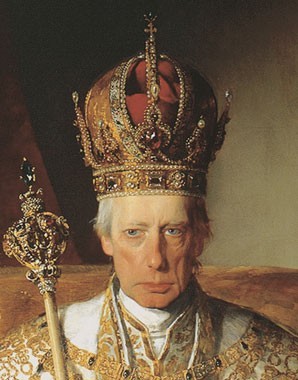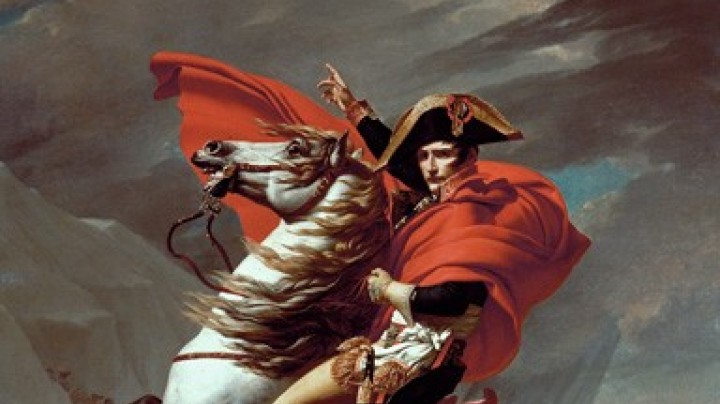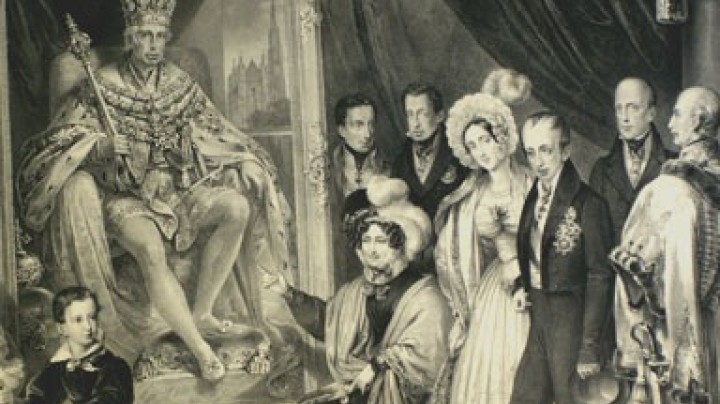The Franzensburg – the ‘citizen-emperor’s’ chivalric fantasy
In the park at Laxenburg, in the middle of a lake, rises a surreal edifice, a fairytale castle. Appropriately for this romantic setting, a ferry carries visitors to the gate. Welcome to Habsburg Historyland!
The visitor enters a knight’s castle which has everything: there is a Treasure Chamber (Schatzkammer), an Armoury (Waffensaal), the Chatelaine’s Room (Burgfrauenzimmer), Squires’ Room (Knappenstube) and even a castle dungeon. Everywhere, there are Habsburgs in curiously archaic dress on paintings and stained glass, as statues and busts. At the very latest upon reaching the sumptuously-decorated centre of the place, consisting of the Throne Room (Thronsaal), the Habsburg Room (Habsburgersaal) and the Lorraine Room (Lothringersaal), it becomes apparent that this is all meant to be taken seriously.
The Franzensburg bears the name of its creator, Emperor Franz II/I. What initially began as a romantic whim – a summerhouse in romantic Gothic style – became ever more bound up with the affairs of state. In the middle of his beloved Laxenburg Schlosspark, the monarch, otherwise characterized as a level-headed ‘Bürgerkaiser’ (‘citizen-emperor’) with a close affinity to the common people, created in several stages a historically-embellished, extravagant monument aimed at glorifying the Habsburg dynasty, an ideological substratum for Austrian imperial rule, which had been established only since 1804. The message behind it was this: while the title of Austrian emperor may be new, yet the dynasty can look back over centuries of monarchic rule.
The venerable past of the house of Habsburg and its dynastic aspirations, which were more than called into question, particularly by Napoleon, were to be represented, by means of historical set pieces and architectonic references, as a monument which could be entered and experienced. Original medieval architectural features and fittings were collected from monasteries and churches, palaces and town halls throughout the Empire and arranged in Laxenburg to form a pseudo-medieval picture-book architecture.
The immediate environs of the Franzensburg were arranged as a Rittergau (chivalric precinct) with a tiltyard, knight’s tomb, knight’s column and Gothic bridges. The possibility was even considered of erecting in the parkland a full-sized replica of the Habichtsburg, the Habsburg dynastic seat in the Swiss canton of Aargau, although in the end these plans were never realised.






